How to Fill Raised Garden Beds: Best Soil Mix and Layering Tips
- September 27, 2024
- 0 comment
Creating a thriving garden starts with the right foundation, and for many gardeners, that foundation lies in raised garden beds. These elevated plots not only enhance drainage and soil quality but also offer an accessible space for planting a variety of vegetables, flowers, and herbs. However, achieving optimal growth requires more than just filling these beds with any soil. Understanding the best soil mix and layering techniques is crucial for nurturing healthy plants. In this guide, we’ll explore the ideal soil components, effective layering methods, and tips for maintaining your raised garden beds, ensuring your garden flourishes throughout the growing season.
Understanding Raised Garden Beds
Raised garden beds are elevated planting areas that are typically enclosed by wooden, stone, or synthetic materials. They vary in height but are generally constructed to be at least 6 to 12 inches above the surrounding soil level. The primary purpose of raised garden beds is to create a controlled environment for growing plants.
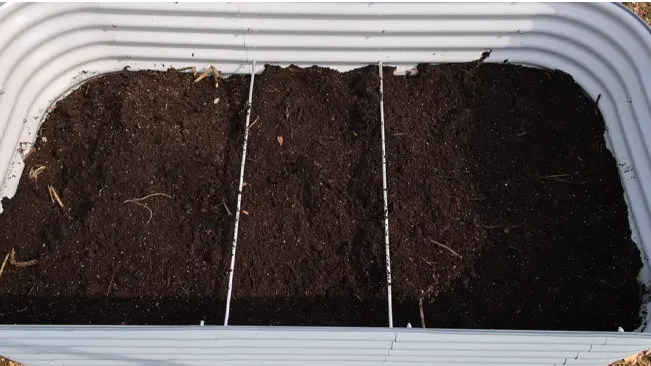
This design allows gardeners to have more control over the soil quality, drainage, and overall growing conditions. Additionally, raised beds can extend the growing season, as the soil warms up faster in the spring and drains better after heavy rains, reducing the risk of root rot and other moisture-related issues.
Advantages of Using Raised Beds
Improved Drainage
One of the most significant benefits of raised garden beds is improved drainage. In traditional garden plots, water often accumulates, particularly in areas with heavy clay soils or poor drainage systems. This excess moisture can lead to waterlogged conditions that suffocate plant roots, promoting rot and other diseases. Raised beds, by their design, elevate the soil above the ground level, allowing excess water to drain away quickly and efficiently. This drainage is crucial for preventing issues like root rot, which can severely hinder plant growth and yield.
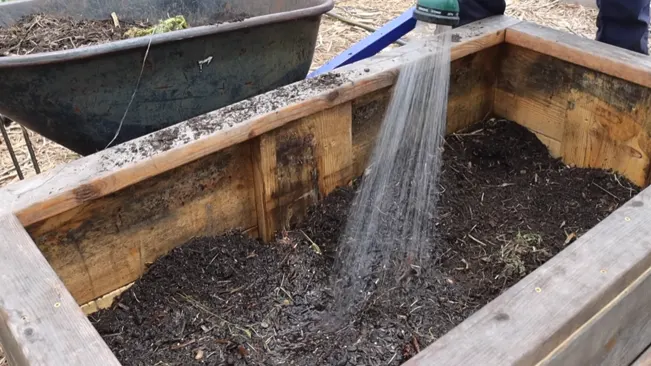
Moreover, the soil in raised beds warms up faster in spring due to increased exposure to sunlight, which not only accelerates germination but also allows plants to thrive earlier in the growing season. In regions prone to heavy rainfall, the ability of raised beds to shed water prevents the soil from becoming overly saturated, helping to maintain an ideal balance of moisture that supports healthy root systems. This controlled moisture environment is particularly advantageous for delicate seedlings and plants sensitive to water stress, ensuring they develop strong roots and robust growth.
Soil Control
Raised garden beds provide gardeners with the ability to create a custom soil mix tailored to the needs of specific plants. Unlike traditional garden soil, which can vary greatly in composition, structure, and nutrient content, raised beds allow for meticulous soil preparation. Gardeners can fill the beds with a blend of high-quality topsoil, compost, and organic matter, ensuring a nutrient-rich environment that promotes vigorous growth.
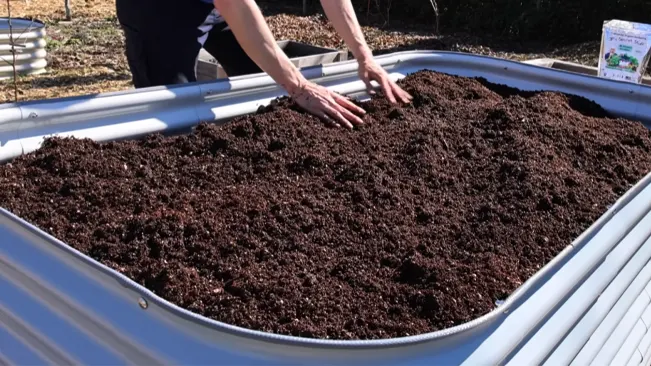
This level of soil control is particularly beneficial when growing vegetables, herbs, and flowers, each of which may have unique nutrient and pH requirements. For instance, leafy greens like spinach thrive in nutrient-rich, slightly acidic soil, while root vegetables like carrots prefer looser, well-drained soil that can accommodate their growth. By crafting a soil mix tailored to specific plants, gardeners can enhance nutrient availability, improve soil structure, and promote optimal conditions for root development. Additionally, raised beds make it easier to monitor and amend the soil as needed throughout the growing season, allowing for continuous adjustments to ensure plants receive the necessary nutrients for healthy growth.
Components of an Ideal Soil Mix
1. Topsoil
Topsoil is the uppermost layer of soil, typically rich in organic matter, nutrients, and microorganisms essential for plant growth. Its primary role in a soil mix is to provide the foundational structure for plants, as it contains the necessary nutrients that support healthy development. Good-quality topsoil is typically dark in color, crumbly in texture, and free of contaminants such as pesticides or herbicides. It serves as the base for a soil mix, supplying essential minerals and promoting healthy root establishment.
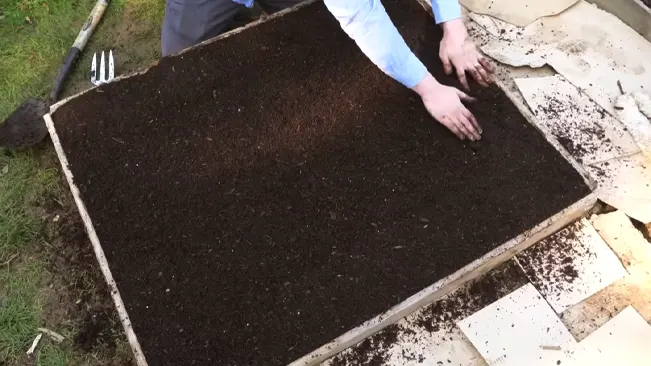
The soil structure is vital, as it affects aeration, drainage, and water retention. Topsoil also supports beneficial soil organisms, such as earthworms and mycorrhizal fungi, which enhance nutrient availability and soil health. When sourcing topsoil for raised beds, it’s essential to choose a product that has been screened for consistency and quality, ensuring that it’s suitable for cultivating plants.
2. Compost
Compost is organic matter that has decomposed through natural processes, resulting in a nutrient-rich amendment that improves soil health. The nutrient benefits of compost are vast; it enhances soil fertility, improves soil structure, and promotes beneficial microbial activity. Compost provides a slow-release source of essential nutrients like nitrogen, phosphorus, and potassium, which are vital for plant growth and development.
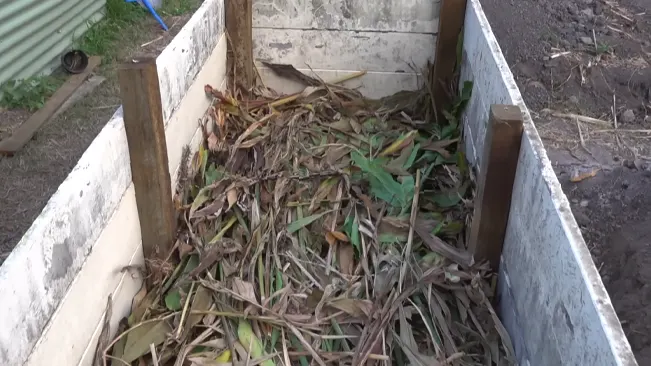
Making compost is an environmentally friendly process that can be done at home using kitchen scraps, yard waste, and other organic materials. To create compost, layer brown materials (carbon-rich, like dried leaves and straw) with green materials (nitrogen-rich, like vegetable scraps and grass clippings) in a compost bin or pile. Maintaining the right moisture levels and turning the pile regularly encourages decomposition, transforming the materials into nutrient-rich compost over a few months. By incorporating compost into the soil mix, gardeners can significantly boost soil fertility and create a healthy growing environment.
3. Peat Moss or Coconut Coir
Peat moss and coconut coir are both organic materials that enhance water retention and aeration in soil mixes. Peat moss is harvested from peat bogs and is prized for its ability to retain moisture while providing a lightweight structure. It helps prevent soil compaction, allowing roots to access air and nutrients more efficiently. However, peat harvesting has environmental concerns, as it can deplete natural ecosystems.

Coconut coir, on the other hand, is a sustainable alternative derived from the husks of coconuts. It offers similar water retention properties but is more environmentally friendly, as it utilizes a byproduct of the coconut industry. Both materials are excellent for improving soil structure, promoting moisture retention, and enhancing the overall health of the soil mix. When choosing between the two, consider the environmental impact and availability of the materials in your region.
4. Perlite or Vermiculite
Perlite and vermiculite are both lightweight, mineral-based additives that improve aeration and drainage in soil mixes. Perlite is a volcanic glass that, when heated, expands into lightweight, white particles. It helps to increase airflow within the soil, preventing compaction and promoting healthy root growth. Perlite is particularly beneficial in improving drainage, ensuring that excess water can escape while retaining some moisture.
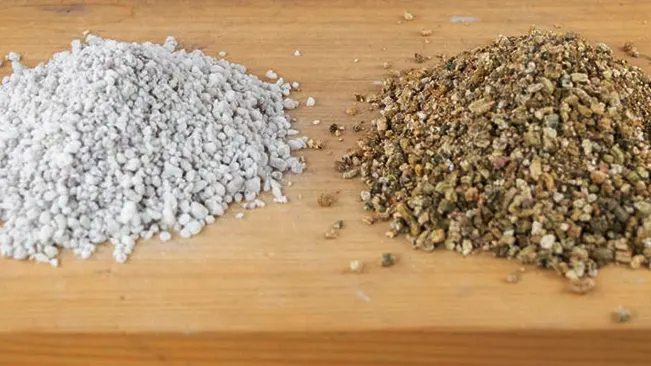
Vermiculite, a mineral that expands when heated, is also excellent for enhancing soil aeration. It has a unique ability to retain moisture while allowing for proper drainage, making it ideal for seedlings and young plants that require consistent moisture without waterlogging. Both perlite and vermiculite can be used to create a well-balanced soil mix that supports robust plant growth by preventing compaction and ensuring that roots have access to air and water.
Recommended Ratios for Mixing Components
- 40% Topsoil: This provides the base for the soil mix, ensuring essential nutrients and a solid structure for plant roots.
- 30% Compost: Adding a substantial amount of compost enriches the soil with nutrients, enhances microbial activity, and improves overall fertility.
- 20% Peat Moss or Coconut Coir: This component enhances moisture retention while promoting aeration, ensuring that plants have consistent access to water without becoming waterlogged.
- 10% Perlite or Vermiculite: Including this percentage improves drainage and aeration, preventing soil compaction and allowing roots to breathe.
Layering Method
1. Bottom Layer: Coarse Materials (Twigs, Straw)
The bottom layer of a raised garden bed should consist of coarse materials, such as twigs, straw, or small branches.
- Drainage: Coarse materials create air pockets that facilitate drainage, allowing excess water to escape and preventing the soil from becoming waterlogged.
- Aeration: The larger particles promote airflow within the soil, ensuring that plant roots receive adequate oxygen, which is essential for healthy growth.
- Organic Matter Decomposition: As the coarse materials break down over time, they contribute organic matter to the soil, enriching it with nutrients and improving soil structure.
2. Middle Layer: Organic Matter (Compost)
The middle layer should be composed of organic matter, primarily compost. This layer is crucial for providing essential nutrients to plants and improving soil fertility.
- Nutrient-Rich: Compost is packed with nutrients, including nitrogen, phosphorus, and potassium, which are vital for plant growth.
- Microbial Activity: Compost promotes the growth of beneficial microorganisms, which aid in nutrient cycling and soil health.
- Moisture Retention: Organic matter retains moisture, ensuring that plants have a consistent water supply while preventing drought stress.
3. Top Layer: Quality Soil Mix
The top layer consists of a high-quality soil mix tailored to the specific needs of your plants. This layer is essential for providing a fertile environment for seed germination and root establishment.
- Optimal Growth Conditions: A balanced soil mix supports healthy plant growth by providing the right nutrients, moisture, and aeration.
- Surface for Planting: This layer provides a suitable surface for planting seeds or transplants, ensuring they have access to the necessary resources for establishment.
Considerations for Different Plant Types
1. Vegetables
When growing vegetables in raised garden beds, it’s essential to consider the specific needs of each crop. Vegetables often require nutrient-rich soil with good drainage to support their rapid growth. Many vegetable plants, such as tomatoes and peppers, thrive in warmer soil, so the elevated nature of raised beds helps maintain optimal temperatures.
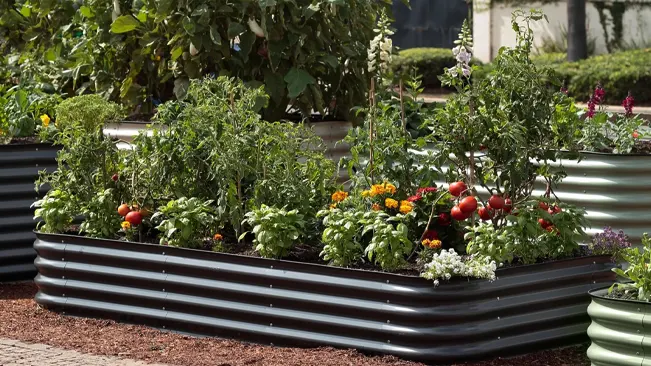
Additionally, incorporating compost and organic matter can provide the necessary nutrients, while careful planning of spacing ensures adequate air circulation and sunlight exposure.
2. Flowers
For flowering plants, the soil composition in raised beds plays a vital role in their overall health and bloom quality. Many flowers prefer well-drained soil with a balanced pH, so it’s crucial to select a soil mix that provides both aeration and moisture retention. Adding organic matter not only enriches the soil but also attracts beneficial insects and pollinators.
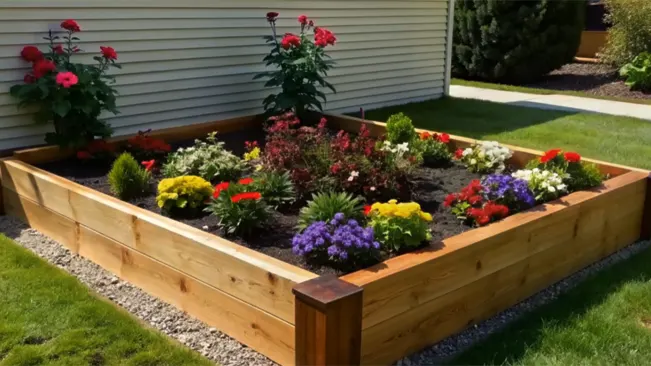
Additionally, flowers often have varying sunlight and water requirements, so understanding the specific needs of each species can help create a thriving floral display.
3. Herbs
Herbs generally thrive in well-drained soil that is rich in nutrients yet light enough to allow for easy root growth. Raised garden beds provide an ideal environment for herbs, as they often require less water than many vegetables and can benefit from soil amendments like compost to enhance flavor and aroma.
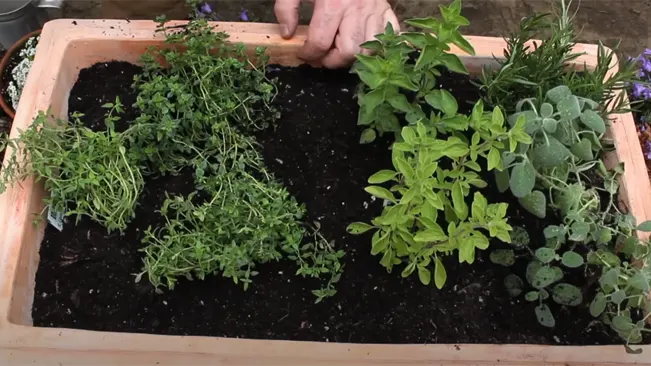
When planting herbs, consider their growth habits and spacing needs, as many herbs can spread quickly. Additionally, grouping herbs with similar light and water requirements can help ensure a successful and productive herb garden.
Maintenance Tips for Raised Garden Beds
Regular maintenance is crucial for ensuring the health and productivity of raised garden beds. One important practice is regular soil testing, which helps determine the pH and nutrient levels of the soil. Testing should be done at least once a year, ideally in the spring before planting. This information allows gardeners to make informed decisions about necessary amendments to optimize soil health. Over time, adding organic amendments like compost or well-rotted manure can replenish nutrients that plants consume, while also improving soil structure. Knowing when to add these amendments is essential generally, they should be incorporated in the spring or fall, before planting or during soil preparation.
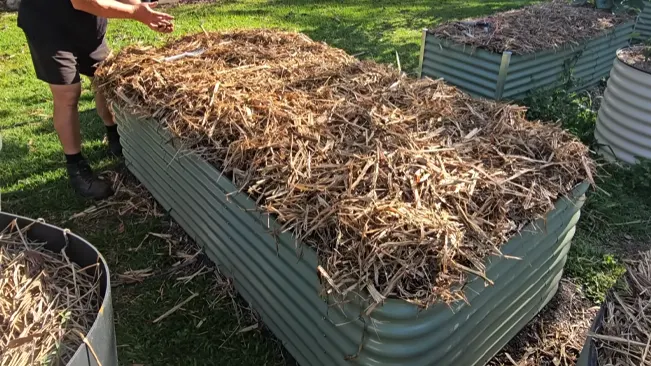
Mulching is another vital maintenance practice for raised garden beds. Applying a layer of mulch, such as straw, wood chips, or shredded leaves, helps retain soil moisture, suppress weeds, and regulate soil temperature. This can lead to healthier plants and reduced watering needs. For effective mulching, aim for a thickness of 2 to 4 inches, ensuring that the mulch does not directly contact plant stems to prevent rot. By implementing these maintenance tips soil testing, timely amendments, and mulching gardeners can create a thriving environment that supports robust plant growth and yields.
Common Mistakes to Avoid
Using Poor Quality Soil or Materials
- Opt for high-quality topsoil and organic matter to ensure proper nutrient levels.
- Avoid using contaminated or overly sandy soils, which can harm plant growth.
Overfilling or Underfilling the Beds
- Fill raised beds to an appropriate height (generally 6-12 inches) to allow for proper root development.
- Avoid overfilling, which can lead to excess moisture retention, or underfilling, which can limit plant growth.
Neglecting Drainage Considerations
- Ensure proper drainage by incorporating coarse materials in the bottom layer.
- Monitor for waterlogging and adjust soil composition as necessary to promote healthy root systems.
Conclusion
In conclusion, successfully filling raised garden beds requires the right soil mix and effective layering techniques. By incorporating coarse materials for drainage, nutrient-rich compost, and quality soil mixes, gardeners can create an optimal environment for plant growth. Regular maintenance, including soil testing and mulching, further supports the health of the beds, while avoiding common mistakes ensures a productive gardening experience. With these strategies, gardeners can look forward to vibrant and bountiful harvests from their raised beds.
FAQs
- What is the best soil mix for raised garden beds?
The ideal soil mix typically consists of 40% topsoil, 30% compost, 20% peat moss or coconut coir, and 10% perlite or vermiculite. This combination provides good drainage, nutrient retention, and aeration. - How deep should I fill my raised garden beds?
Raised garden beds should generally be filled to a depth of 6 to 12 inches to allow for proper root development. The exact depth can vary depending on the types of plants you intend to grow. - How often should I test the soil in my raised beds?
It’s recommended to test the soil at least once a year, ideally in the spring before planting. Regular testing helps you understand nutrient levels and pH, allowing for informed amendments. - What materials should I avoid using in raised garden beds?
Avoid using poor quality soil, contaminated materials, or excessively sandy soil, as these can harm plant growth. It’s also important to steer clear of any treated wood or materials that may leach harmful chemicals. - How can I improve drainage in my raised garden beds?
To improve drainage, include a bottom layer of coarse materials such as twigs or straw. Ensuring the raised bed has a proper height and is not overfilled will also help excess water escape. - Is mulching necessary for raised garden beds?
While not mandatory, mulching is highly beneficial. It helps retain soil moisture, suppress weeds, and regulate soil temperature, contributing to healthier plants and reduced watering needs. - Can I grow all types of plants in raised garden beds?
Yes, raised garden beds can support a variety of plants, including vegetables, flowers, and herbs. However, it’s essential to consider the specific needs of each plant type in terms of soil composition, sunlight, and water requirements.

Joel Cunningham
Forestry AuthorI'm Joel Cunningham, an expert in pruning and weed management with over a decade of experience. My skills are rooted in formal training and extensive practice, focusing on advanced pruning techniques and efficient weed control. I'm known for my quality work, precision, and deep understanding of plant health and soil dynamics. My contributions extend to educational initiatives where I share sustainable practices and advice, establishing myself as a reliable and authoritative figure in the gardening community.

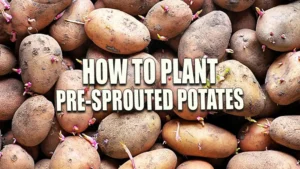
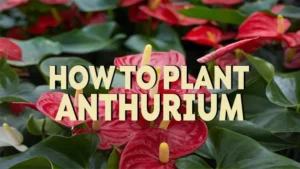




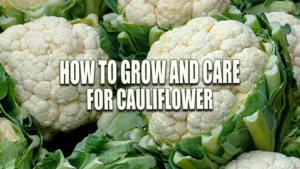
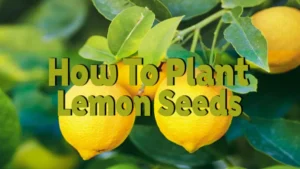
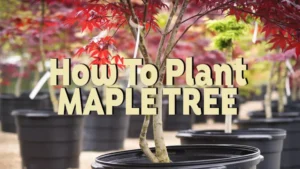

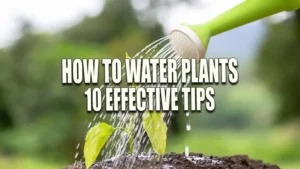
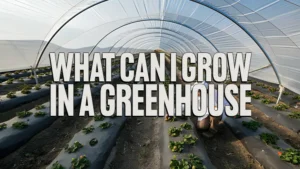
Leave your comment